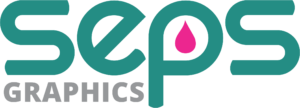Demystifying Screen Printing Equipment: A Comprehensive Guide to Understanding the Tools and Techniques of the Trade.
Screen printing is a versatile and popular method of printing, widely used for producing high-quality prints on a variety of surfaces such as t-shirts, posters, and promotional items. However, for those new to the industry, the world of screen printing equipment can seem daunting and complex. In this blog post, we aim to demystify screen printing equipment by providing an overview of everything you need to know about the essential tools and machinery involved in the process.
1. Screen Printing Press: The screen printing press is the heart of any screen printing operation. It holds the screen in place and allows for precise and consistent printing. There are various types of screen printing presses, including manual, automatic, and semi-automatic models, each catering to different production needs. Manual presses are ideal for small-scale operations and are operated by hand, while automatic presses are suitable for high-volume production and feature automated printing and registration systems.
2. Screens: Screens are a crucial component of the screen printing process. These are mesh frames stretched with a fine fabric, typically made of polyester or nylon. Screens come in various mesh counts, which determine the level of detail and clarity in the printed image. Lower mesh counts are suitable for printing on rough surfaces, while higher mesh counts are ideal for intricate designs and fine detail work.
3. Squeegees: Squeegees are used to push the ink through the screen and onto the substrate. They come in different shapes, sizes, and durometers (hardness), and the choice of squeegee depends on factors such as ink type, substrate material, and design complexity. Squeegees are available in both manual and automatic configurations, and they play a critical role in achieving smooth and consistent prints.
4. Exposure Units: Exposure units are used to transfer the design onto the screen by exposing it to a light source through a film positive. This process hardens the emulsion in the exposed areas, creating the stencil through which the ink will pass during printing. Exposure units come in various sizes and configurations, including tabletop and freestanding models, and they are essential for achieving accurate and detailed prints.
5. Dryers: After printing, the ink must be cured to ensure durability and wash-fastness. Dryers, also known as curing units, use heat to cure the ink, bonding it to the substrate. Conveyor dryers are commonly used in screen printing operations, offering consistent and efficient curing for a wide range of substrates and ink types.
6. Pre-Press Equipment: Pre-press equipment includes items such as screen stretching systems, degreasers, and emulsion coating machines. These tools are essential for preparing screens before the printing process, ensuring that the screens are clean, taut, and coated with a light-sensitive emulsion for accurate image transfer.
7. Ink and Chemicals: Screen printing ink comes in various formulations, including water-based, plastisol, and discharge inks, each suitable for different substrates and printing requirements. Additionally, various chemicals such as emulsion removers, screen openers, and reclaiming solvents are essential for maintaining screens and equipment, ensuring longevity and consistent print quality.
In conclusion, screen printing equipment encompasses a range of essential tools and machinery that are crucial for achieving high-quality prints. By understanding the purpose and function of each component, individuals can make informed decisions when investing in equipment for their screen printing operations. Whether starting a new venture or expanding an existing business, mastering the art of screen printing equipment is key to achieving success in the industry.
